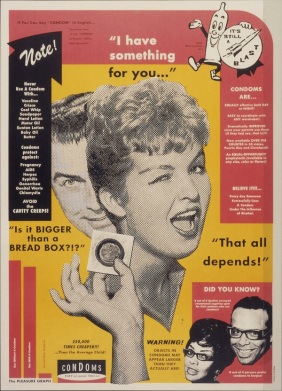The following is written by Lindsay Bosslet for Public Health Insider:
You may be surprised to know that King County has a team of archivists who make sure important county work is preserved for posterity. The latest Archives exhibit covers Public Health’s response to the HIV/AIDS epidemic, and how this approach became a model for other health departments and future disease outbreaks.
We sat down with County Archivist Carol Shenk to find out more about the exhibit and why it’s so important to share with Public Health employees and the pubic alike. But, if you can’t wait, check it out here.
Tell us about the project.
It’s an online exhibit featuring graphics, documents, and photos from the Archives’ Public Health collection, with video-recorded oral histories from leadership and staff from the AIDS Prevention Project. The oral histories were funded by a 4Culture Heritage Project grant.
The exhibit documents Public Health’s response to AIDS from 1982 through 1996. Seattle and King County were among the earliest jurisdictions in the country to provide public funding for an AIDS response. With ties to STD research at the University of Washington, and with staff who were active in community LGBT and AIDS support and advocacy groups, the AIDS Prevention Project became a national model through its innovative programs in HIV/AIDS education, prevention, research, housing, and support for quality care.
The exhibit shows how City and County officials and Public Health staff worked with the community to lead a coordinated response to the epidemic. It also addresses issues that arose around AIDS, many of which are still relevant today, such as LGBT rights, medical privacy, sex education in schools, censorship, stigma against HIV-positive individuals, challenges in reaching disadvantaged and minority communities, normalization of safer sex practices, and the dynamics between Public Health and the communities it serves.
How did this project get started?
Ideas for our exhibits evolve as we are processing records. Sometimes a visually interesting collection lends itself to an exhibit. Other times we find a combination of visually rich materials and a compelling history, highlighting an innovative or significant project undertaken by the County.
In working with these records, it became clear that Public Health’s leadership in the response to HIV/AIDS, combined with the archival collection of graphics and photographs, together would create an engaging exhibit on this important part of our local and national history. We spoke with staff in the HIV/STD program to get early input on how to approach the exhibit in a way that would represent the history of the County’s response to the HIV/AIDS epidemic accurately.
Tim Burak, who, during his time with the AIDS Prevention Project had acted as historian for the program by collecting and organizing the APP’s historical records, volunteered to spend time at the Archives reviewing program photos and identifying individuals, places, and events. Tim’s many stories supported the idea of conducting oral history interviews with staff involved in the APP.
The project was the result of many people’s work, including volunteers. We wanted to get the story right, so we vetted the draft exhibit with the people we interviewed. Overall, the project took two years.
What were your expectations going into the project? Were you surprised by anything?
I was surprised by how everything coalesced into one coherent product. I’ve never before worked on anything so collaborative—where everyone’s work and ideas not only contributed, but where each was essential to the final outcome.
I am including the oral history interviewees in this – they were all incredibly generous with their time, sharing their personal experiences and insights. They helped us piece together a complex narrative that involved political, legal, medical, pedagogical, socioeconomic, and cultural issues, any one of which by itself is a hefty topic. Likewise, the oral history interviewers, UW Professors Michael Brown, David Reyes, and Lawrence Knopp, did a wonderful job and had excellent rapport with their subjects.
How does this project compare to other archiving projects you have worked on?
This project differed from other online exhibits in that it included the oral histories, which made for a much more complex and I think engaging presentation.
We set out to interview Public Health staff from a range organizational levels and professional fields, from front-line staff to educators to researchers to administrators. I think we did capture a good range of experiences, though I know if we interviewed another dozen people we would learn of a dozen more perspectives. Everyone was wonderful. Having multiple perspectives helped clarify the narrative we were constructing. What struck me about all of the interviewees was their commitment to public service, to their professions, and to the communities they serve. It’s no wonder that the program had such a strong impact locally and nationally.
What do you hope the viewers of the project learn?
With all of our exhibits, we want to share the history of King County and to help people understand County government’s role in people’s lives. By hearing Public Health’s perspective, I hope that people get a sense of how this dedicated group of people overcame challenges and innovated during a time that was frightening and overcame challenges and innovated during the time before there was effective treatment for AIDS, before there was effective treatment for AIDS. I also hope people see the care and respect with which Public Health staff regard the community and individuals. There is a dynamic where local government acts as regulator/policer while at the same time being a facilitator, protector, teacher, and helper. And, there is the constant dynamic in government of balancing the needs and interests of individuals with those of the community as a whole. This tension comes up in many fields, and I have learned that it is especially true in public health.
Finally, we hope to inspire people to conduct research on this topic and others using the Archives collections.


